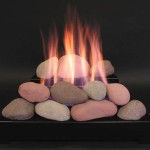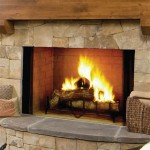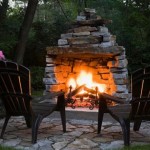Electric vs. Gas Fireplaces: A Comprehensive Comparison
The choice between an electric fireplace and a gas fireplace often presents a dilemma for homeowners seeking supplemental heating and aesthetic appeal. Both options offer advantages and disadvantages, impacting factors such as installation costs, operating expenses, environmental considerations, and overall convenience. This analysis provides a comprehensive comparison of these two fireplace types, enabling informed decision-making based on individual needs and priorities.
Electric fireplaces, powered by electricity, simulate the appearance of a real fire using various technologies, including LED lights, reflective surfaces, and even holographic projections. These units typically require minimal installation, often simply plugging into a standard electrical outlet. Gas fireplaces, conversely, operate on natural gas or propane and produce a real flame, generating heat through combustion. Gas fireplaces necessitate professional installation involving gas line connections and venting to ensure safe operation.
Installation and Setup: Ease vs. Complexity
The installation process represents a significant differentiator between electric and gas fireplaces. Electric fireplaces generally offer a straightforward setup. Many models are designed for freestanding placement, wall mounting, or insertion into existing fireplace openings. The only requirement is a readily accessible electrical outlet with sufficient amperage to handle the unit's power consumption. More elaborate electric fireplaces, such as those designed for in-wall installation, may necessitate minor electrical work, but the overall process remains relatively simple and inexpensive.
Gas fireplaces, on the other hand, entail a more complex and costly installation procedure. A qualified technician must connect the fireplace to a gas line, ensuring proper sealing and leak prevention. Venting is also crucial, as gas fireplaces produce combustion byproducts that must be safely expelled from the home. This can involve installing a chimney, vent pipes, or direct vent systems, depending on the fireplace model and the existing structure of the house. The cost of professional installation, including gas line connections, venting, and permits, can significantly increase the overall expense of a gas fireplace.
Furthermore, gas fireplace installations often require adherence to local building codes and regulations, necessitating inspections and approvals. This adds another layer of complexity to the process and can potentially delay the installation timeline. Electric fireplaces, due to their simpler setup, are generally less subject to stringent regulatory requirements.
Operating Costs and Efficiency: Long-Term Financial Implications
The long-term operating costs of electric and gas fireplaces differ based on energy source prices and heating efficiency. Electric fireplaces consume electricity, and the operating cost is directly linked to the local electricity rate. The cost of running an electric fireplace depends on its wattage and the duration of use. While electric fireplaces can provide supplemental heat efficiently in smaller spaces, their overall heating capacity may be limited compared to gas models.
Gas fireplaces utilize natural gas or propane, and their operating cost is determined by the price of these fuels. Natural gas typically offers a lower cost per BTU (British Thermal Unit) than electricity, potentially making gas fireplaces more economical for heating larger areas. However, the cost of propane can fluctuate and may be significantly higher than natural gas in certain regions. Gas fireplaces generally offer higher heating efficiency than electric models, meaning they convert a larger percentage of the fuel's energy into usable heat.
The efficiency of a gas fireplace is also dependent on its venting system. Direct vent fireplaces, which draw combustion air from outside and vent exhaust gases directly outdoors, are generally more efficient than natural vent models that rely on a chimney. Natural vent fireplaces can lose heat up the chimney, reducing their overall efficiency. The choice of fuel source, venting system, and the frequency of use all contribute to the overall operating costs of a gas fireplace.
Aesthetics and Features: Visual Appeal and Customization Options
Both electric and gas fireplaces provide aesthetic value, but they offer distinct visual experiences. Electric fireplaces rely on simulated flames, which have evolved significantly in recent years. Modern electric fireplaces often incorporate advanced LED technology and holographic projections to create realistic flame effects. These effects can be customized with various color options, flame speeds, and brightness levels. Some electric fireplaces also include features such as crackling sound effects to enhance the ambiance.
Gas fireplaces, conversely, produce a real flame, offering a more authentic visual experience. The flickering flames and glowing embers create a warmth and ambiance that many find appealing. Gas fireplaces are available in a variety of styles, from traditional log sets to contemporary linear designs. The appearance of the flames can also be adjusted, although the customization options are typically more limited than those offered by electric fireplaces. The heat generated by gas fireplaces also contributes to the overall ambiance, providing a tangible sense of warmth and comfort.
Furthermore, some gas fireplaces offer features such as remote controls, thermostats, and programmable timers, enhancing convenience and control. Electric fireplaces also offer similar features, and their integration with smart home systems is becoming increasingly common. The choice between electric and gas fireplaces in terms of aesthetics ultimately depends on individual preferences and design considerations.
Safety Considerations: Managing Potential Risks
Safety is a crucial factor when evaluating electric and gas fireplaces. Electric fireplaces are generally considered safer than gas fireplaces due to the absence of open flames and combustion. There is no risk of carbon monoxide poisoning with electric fireplaces, making them a suitable option for homes with young children or individuals with respiratory sensitivities. The surface of an electric fireplace can also be less hot than that of a gas fireplace, reducing the risk of burns.
Gas fireplaces, however, require careful attention to safety protocols. Carbon monoxide, a colorless and odorless gas produced by incomplete combustion, poses a serious health risk. Proper venting is essential to ensure that carbon monoxide is safely expelled from the home. Carbon monoxide detectors should be installed and regularly tested to provide early warning of any leaks. Gas fireplaces also present a potential fire hazard if not properly maintained or if flammable materials are placed too close to the unit.
Regular maintenance, including cleaning the burner and inspecting the venting system, is crucial for ensuring the safe operation of a gas fireplace. Professional inspections are recommended to identify and address any potential problems before they escalate. While gas fireplaces offer a realistic flame experience, they also require a higher level of vigilance to mitigate potential safety risks. Electric fireplaces, with their simpler operation and lack of combustion, provide a safer alternative for homeowners concerned about these hazards.
Environmental Impact: Assessing Sustainability
The environmental impact of electric and gas fireplaces depends on the energy sources used and the efficiency of the units. Electric fireplaces consume electricity, and the environmental footprint depends on the source of that electricity. If the electricity is generated from renewable sources, such as solar or wind power, the environmental impact of an electric fireplace is significantly reduced. However, if the electricity is generated from fossil fuels, such as coal or natural gas, the environmental impact is higher.
Gas fireplaces burn natural gas or propane, both of which are fossil fuels. The combustion of these fuels releases greenhouse gases, contributing to climate change. Natural gas is generally considered a cleaner-burning fuel than propane, but both have environmental consequences. The efficiency of a gas fireplace also affects its environmental impact. More efficient models consume less fuel and produce fewer emissions. Direct vent fireplaces, which seal off the combustion chamber from the indoor air, are generally more environmentally friendly than natural vent models.
Furthermore, the extraction and transportation of natural gas and propane can have environmental impacts, including methane leaks and habitat disruption. The overall environmental impact of a gas fireplace depends on a variety of factors, including the fuel source, the efficiency of the unit, and the specific practices of the gas supplier. Electric fireplaces, powered by renewable energy, can offer a more sustainable alternative, but the environmental impact ultimately depends on the energy infrastructure in a given region.

Gas Vs Electric Fireplaces Montigo

Advantages Of Gas Vs Electric Fireplaces

Gas Fireplaces Vs Electric Bowden S Fireside

Should I Buy A Gas Or Electric Fireplace What Is The Difference
Gas Wood Pellet Electric Which Fireplace Or Stove Is Right For You Marshall S Inc

Fireplace Usage Cost Calculator

Gas Vs Electric Fireplace

Electric Fireplace Modern Flames

ᑕ❶ᑐ Gas Or Electric Fireplace Which Is Better For You

Electric Fireplaces A Safe Alternative To Gas Touchstone Home S Inc








